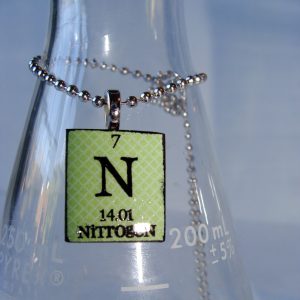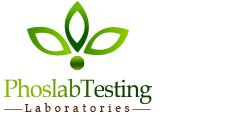 By Joseph Mas
By Joseph Mas
Nitrogen is a very important and needed for plant growth. It is found in healthy soils, and give plants the energy to grow, and produce fruit or vegetables. Nitrogen is actually considered the most important component for supporting plant growth.
Nitrogen is part of the chlorophyll molecule, which gives plants their green color and is involved in creating food for the plant through photosynthesis. Lack of nitrogen shows up as general yellowing (chlorosis) of the plant. Because nitrogen can move around in the plant, older growth often yellows more than the new growth.
Nitrogen is also the primary building block for plant protoplasm. Protoplasm is the translucent substance that is the living matter in cells. It is needed for flower differentiation, speedy shoot growth, the health of flower buds and increases the quality of fruit set. It also acts as a catalyst for the other minerals.
In a process called photosynthesis, plants use energy from the sun to change carbon dioxide (CO2 – carbon and oxygen) and water (H2O- hydrogen and oxygen) into starches and sugars. These starches and sugars are the plant’s food. Photosynthesis means “making things with light”.
 The primary nutrients are needed for plan growth are nitrogen (N), phosphorus (P), and potassium (K). These major nutrients are usually the first lacking from the soil first because plants use large amounts for their growth and survival. In addition, these elements can leach from soil naturally with the weather especially during rainy or hot seasons.
The primary nutrients are needed for plan growth are nitrogen (N), phosphorus (P), and potassium (K). These major nutrients are usually the first lacking from the soil first because plants use large amounts for their growth and survival. In addition, these elements can leach from soil naturally with the weather especially during rainy or hot seasons.
There are not always enough of these nutrients in the soil for a plant to grow healthy. This is why many farmers and gardeners have their soil tested so they know which fertilizers to use that will add appropriate the nutrients to the soil based on which types of things they grow. Too much nitrogen can cause stability issues, leaching nutrients and over-stimulating top growth. Some fertilizers use a “quick release” formulation that allow for fast greening, but provide for no long term health. Nourishing your garden or lawn strictly from fertilizers like this sends the lawn into a high-stress “starvation cycle.” Many commercially sold fertilizers contain too little slow release nitrogen, if any, or are applied in too large a quantity. The best result for your garden or lawn and the environment are achieved by applying the correct type of nitrogen, in the proper amount, at optimal times throughout the year. How much nitrogen to apply can be found by getting your soil tested. An accurate analysis of the elements in your soil goes a long way for a healthy productive garden and a green lawn.
Soil
Most plants grow by absorbing nutrients from the soil. Their ability to do this depends on the nature of the soil. Depending on its location, a soil contains some combination of sand, silt, clay, and organic matter. The makeup of a soil (soil texture) and its acidity (pH) determine the extent to which nutrients are available to plants.
Soil texture affects how well nutrients and water are retained in the soil. Clays and organic soils hold nutrients and water much better than sandy soils. As water drains from sandy soils, it often carries nutrients along with it. This condition is called leaching. When nutrients leach into the soil, they are not available for plants to use.
Balancing your soil nutrients
You might not need much fertilizer in your garden. You may just need to liberate the nutrients already present in your soil with beneficial soil organisms, proper soil aeration, soil drainage, and re-mineralization. For the gardener, this means that organic fertilizers with low N-P-K labels are perfectly adequate for your garden as long as you’re properly caring for your soil. Without proper soil aeration, mineral nutrients, and other factors, your plants may not be able to absorb phosphorous and potassium anyway, so loading up your soil with high levels of phosphorous and potassium may not make much difference with the health of your plants.
Nitrogen is typically available to the soil without additional fertilizers. The trick is having healthy soil full of beneficial microorganisms that can make use of the nitrogen that is available in the air. Earthworm castings and properly prepared compost are teeming with these beneficial organisms. Also, companion and cover crop plants like beans and clover can fix nitrogen that boost soil’s health. Other excellent natural sources of nutrients are fish meal, kelp, alfalfa meal, and bat guano.
Balance is key to a green thumb
Remember, if you have too little nitrogen leaves become yellow-green, the oldest showing yellowing first. Since the plant can move nitrogen, when it is low it takes it from older growth and gives it to newer growth. Growth is reduced, there will be less and smaller fruits.
If the nitrogen is too high then fruits take longer to ripen. Fruit will be soft and have short storage life. Too much nitrogen also hurts root growth and water efficiency of plants. It also will make your plants less tolerant to cold spells.
Get your soil tested by an accredited laboratory
Testing your garden soil is the best way to evaluate the fertility status of your field, garden or high tunnel before planting. A soil test is useful in the diagnosis of plant culture problems, and it is also an important tool in improving the soil nutritional balance. Soil tests will save you money and energy in the long run. The analysis is designed to look for nutrient deficiencies. Knowing then nutrient content in your soil you can then you can amend your soil appropriately based on what you are growing from tomatoes to grass.
Click here for information and to see our garden soil testing service.
